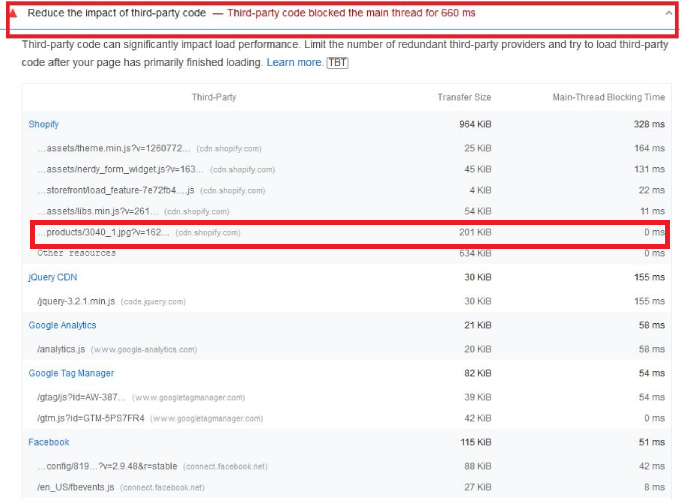Table Of Content
Optimize Third-Party Images for Maximum Shopify Store Speed
The following are some points for improving the site speed that is affected by third-party images-
- 1. A website’s performance can be significantly affected by third-party images.
- 2. Page performance can be affected by slow server response times, slow DNS lookups, Location of third-party servers, and third-party related network aspects.
- 3. Decision between third-party hosted images VS images hosted on your Shopify can be one of the simple but critical factors for your site speed
We have explained the impact of third-party images and solutions to minimize the impact on site speed due to these images.
- Tools for measuring third-party images and blocks
- How Does Third-Party Image Affect Page Performance?
- Increased Page Load Time
- Increased Page Size
- Increased Bandwidth Usage
- How to Reduce the Impact of Third-Party Images?
- Optimize third-party images that come from social media/applications
- Optimize third-party images/block
Utilize Measurement Tools
Tools like Google PageSpeed Insights, GTMetrix, and Google Lighthouse provide valuable insights into third-party image impact and areas for improvement.

How Does Third-Party Image Affect Page Performance?
1. Increased Page Load Time
- There is no control over responsive images if it comes with HTML blocks
- Additional DNS lookup
- No control over setting expires header
- Might be delivered from a distantly located server
- Slow servers can add to image load time
Read this Blog and Find:- Shopify Image Sizes – The Ultimate Guide
2. Increased Page Size
- No Control over image size
- Third-party images are large in size, they will increase the page size
- Larger images with higher resolution or dimensions will have larger file sizes.
Read this Blog and Find:- How image attribute sizes with DPR
3. Increased Bandwidth Usage
- Each third-party image added to your webpage requires the user’s browser to download the image data from the external server.
- If you have multiple third-party images on your webpage, each image requires a separate HTTP request to fetch it from the external server. These requests contribute to the overall bandwidth usage.
Looking For Expert Shopify Speed Optimization And Other Services Get In Touch
How to Reduce the Impact of Third-Party Images?
There are a few things you can do to minimize the impact of third-party images/code on website speed
1. Optimize Images from Third-Party Sources (Social Media, Apps)
- You need to understand the different options for images available to the third party (like social media).
- While uploading images on Social Media and using that feed for your website, consider the impact of the image payload on your website while uploading on Social Media.
- If these images are not changed frequently then we recommend uploading these images on shopify rather than using it from the social media feed. ensure that your images are high-quality and of efficient size, or redesign your website section so that third-party images can be used more effectively.
2. Optimize Third-Party Images/Block
- There is no scope for third-party images present so we do not have control over third-party images.
- Rather than using HTML sections from social media/ third-party websites, fetch them (if legal and with no copyright infringements) and use your own defined HTML and CSS. By using your own HTML CSS, you will be able to apply lazy loading and picture tags simultaneously. as a result, the image payload for the above fold will be reduced.
Read this Blog and Find:- Shopify Speed Optimization Step-by-Step Guide
Benefits of Optimizing Third-Party Images
- Enhanced Site Speed: Reduced page load times, smaller page sizes, and optimized bandwidth usage translate to a faster, more responsive user experience.
- Improved SEO: Search engines favor fast-loading websites, boosting your Shopify store’s search ranking and visibility.
- Increased Conversions: Improved page speed directly correlates with higher conversion rates, boosting sales and revenue.
Conclusion
By proactively managing third-party images, Shopify store owners can ensure optimal site speed, enhance SEO, and drive greater customer engagement and business success. Implementing the strategies outlined above empowers you to leverage the benefits of third-party imagery without compromising your store’s performance. Remember, every millisecond counts in today’s e-commerce landscape, so optimize your third-party images and watch your Shopify store soar!
Call to Action
Contact our team of expert Shopify developers to discuss a tailored optimization strategy for your unique needs. We specialize in crafting fast, SEO-friendly Shopify stores that convert, ensuring your third-party images enhance, not hinder, your online success.


